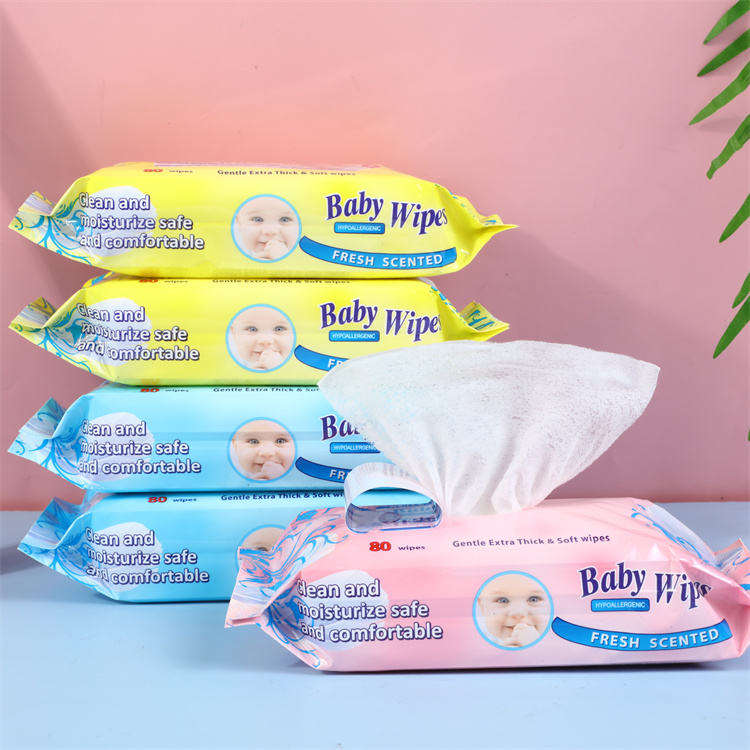OEM wet wipes can be made from various materials, depending on the specific requirements of the product and its intended use. Here are some common materials used for OEM wet wipes:
Nonwoven Fabrics:
Nonwoven fabrics are widely used in wet wipe manufacturing due to their absorbency, softness, and ability to hold liquid. They are typically made from fibers that are bonded together using heat, chemicals, or mechanical processes. Nonwoven fabrics can be made from synthetic fibers (such as polypropylene or polyester) or natural fibers (such as cotton or viscose).
Spunlace:
Spunlace fabric is a type of nonwoven fabric produced by entangling fibers using high-pressure water jets. It offers excellent strength, absorbency, and softness, making it suitable for wet wipes. Spunlace fabrics are commonly used in personal care wipes, baby wipes, and household cleaning wipes.

Meltblown:
Meltblown fabric is produced by extruding molten polymer through small nozzles, which then solidify into fine fibers. These fibers are randomly laid and bonded, creating a nonwoven fabric with high filtration efficiency and excellent liquid-holding capacity. Meltblown fabrics are commonly used in disinfectant wipes and medical wipes.
Airlaid:
Airlaid fabric is made by combining pulp fibers with air and a binder. This process creates a loosely bonded, absorbent fabric that is soft and bulky. Airlaid fabrics are commonly used in industrial and household wipes, as well as in foodservice and hygiene products.
Composite Materials:
Wet wipes can also be made using composite materials, which combine different types of fabrics or materials to achieve specific properties. For example, a wet wipe may have a topsheet made of spunlace fabric for softness and absorbency, while the bottom layer is made of a film or laminate for strength and liquid barrier properties.
It’s important to note that the choice of material for OEM wet wipes depends on factors such as the intended use, desired characteristics (such as softness, absorbency, or strength), regulatory requirements, and cost considerations. Manufacturers may also consider factors like biodegradability, sustainability, and environmental impact when selecting materials for wet wipes.